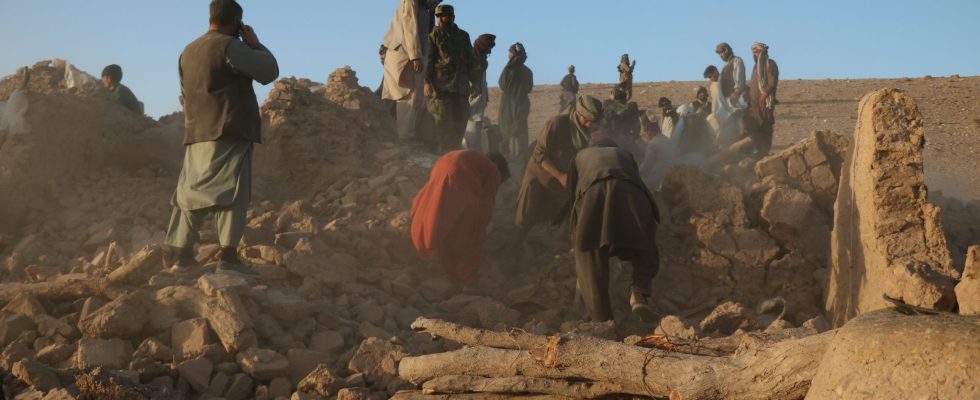More than 2,000 people died in a violent earthquake which struck western Afghanistan on Saturday October 7, causing enormous damage, according to a new official report released this Sunday. The 6.3 magnitude earthquake, which struck areas 30 kilometers northwest of the city of Herat, was followed by eight strong aftershocks. In addition, more than 1,200 people are injured, and more than 1,300 houses have been completely destroyed.
In the village of Sarboland in the Zinda Jan district, dozens of houses were destroyed, an AFP journalist noted at nightfall on Saturday. Men were clearing rubble while women and children waited outside, among the debris. According to the World Health Organization (WHO), more than 600 houses were destroyed or partially damaged in at least twelve villages in Herat province. In total, 4,200 people were affected in one way or another by the earthquake, according to the same source.
In Herat, considered the cultural capital of Afghanistan, many residents and traders fled buildings at the first tremor. “It is likely that there will be a significant number of casualties and that the disaster will be potentially widespread,” says the USGS.
A country plagued by earthquakes
“From the first shock, all the houses collapsed,” says Bashir Ahmad, 42. “Those who were inside the houses were buried. There are families of whom we have no news,” he adds. Nek Mohammad was at work when the first tremor hit Afghanistan around 11 a.m. (7:30 a.m. in France). “We returned home and found that there was nothing left. Everything had turned to sand,” he explains, adding that around 30 bodies were found. “For the moment, we have nothing. No blankets or anything else. We are abandoned with our martyrs,” adds this 32-year-old man.
Afghanistan frequently experiences earthquakes, particularly in the Hindu Kush mountain range, close to where the Eurasian and Indian tectonic plates meet. “Afghanistan is frequently hit by earthquakes, particularly in the Hindu Kush mountain range, located near the junction of the Eurasian and Indian tectonic plates,” recalls the BBC, noting that another earthquake killed more than 1,000 last year in the poor southeastern province of Paktika. And last March, a 6.5 magnitude earthquake killed 13 people in Afghanistan and Pakistan, near the town of Jurm, in the northeast of the country.
Herat province, which has a population of 1.9 million according to World Bank data, has also been hit by drought for years, crippling many already struggling farming communities. Afghanistan is also already in the grip of a severe humanitarian crisis, since the return to power of the Taliban in 2021 and the subsequent withdrawal of international aid.
